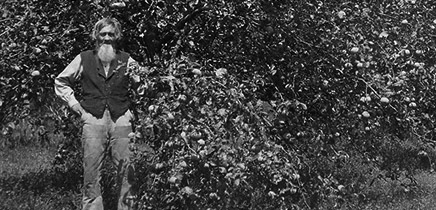America was suffering during the 1930s, and Carver County was no exception. Called a “passing crisis” by President Hoover, it was President Franklin D. Roosevelt and his New Deal that brought hope to millions. Among the many “alphabet agencies” of the New Deal was the Works Progress Administration or WPA.
The WPA was started in April 1935 to replace direct federal relief, or the “dole”. It was similar to an earlier organization, the Civil Works Administration (CWA), but was aimed at small-scale, rather than large-scale, public projects. The goal was to provide work for the unemployed as the jobless rate hit nearly twenty-five percent. Over its eight year existence, the WPA invested nearly $13.4 billion dollars. The program was not discontinued until 1943, when the economy stabilized and workers found jobs in the war and defense industries.
The WPA sought to not only put the jobless to work, but provide training, education, and creative opportunities for its participants. The projects of the WPA focused on construction, remodeling, and design; or community service. Buildings such as post offices, libraries, hospitals, soldiers home, and parks were designed, built, and filled with murals and art by WPA workers. Community service projects included nursery schools, adult and vocational education, libraries (both public and school), sewing projects to provide clothing for those who needed it, and more. This also included the Arts: music and theatre programs to let the public forget their troubles for a while, and writing and arts projects to keep artists working.
A key characteristic of the WPA was that it was operated by state and local, rather than federal, governments. Local agencies were required to provide 10-30% of all project costs. These governments worked closely with nonprofit and community groups that were already active in public and community service. The WPA focused on economic stimulation and giving people a sense of pride and value through meaningful work, rather than a government handout.
In Minnesota alone, thousands benefitted from this program. By September 1935, over 4,000 Minnesotans were put to work. An illustration taken from a report on WPA activities between 1935-1936 highlights some important numbers: 1,266 projects, 65,713 men employed, and $31,735,397.13 spent on wages, materials and supplies. Minnesota’s WPA employment reached its peak in 1938, with 68,000 employed in September of that year. The majority of the projects funding went to the three largest cities: St. Paul, Minneapolis, and Duluth. In rural Minnesota, there were 58,177 eligible for the WPA program in 1935. In Carver County, this meant 181 cases eligible, with 291 individuals.
In November 1935, the State WPA office approved $14,260 in WPA projects within Carver County. This funding mostly covered county-wide roadwork: grading, ditching, gravel surfacing, installing drainage structures, and installing guard rails on certain State and County Aid highways. By 1936, 139 workers were employed on eight county projects. In the years that followed, many projects throughout the county were completed, providing much needed work rather than monetary handouts. Projects included: work on the county fairgrounds; sidewalk, curb, and gutter work; water main and sewage projects; landscaping and remodeling of Waconia Highschool grounds; a mural in the Waconia school; marriage license indexing; work at the experimental farm; work on creeks and channel improvements; and more.
In the twenty-first century, locating records on what WPA projects were completed, beyond those in the newspapers, can be tricky. The work done on the Carver County Fairgrounds was commemorated with a plaque at the front entrance. Others projects were documented in articles and photographs. Projects like sewage systems and drain pipes, were not commemorated. What we do know is that the WPA was very active in Carver County, providing projects, money, and jobs for many local citizens struggling to make ends meet.
“139 WPA Workers are Engaged on 8 Carver County Projects.” Waconia Patriot, April 9, 1936.
“$14,260 in WPA Projects for County Ok’d.” Waconia Patriot, November 21, 1935.
“$7,800 Sidewalk Project at Chaska Under WPA.” Waconia Patriot, May 19, 1938.
“City WPA Plan Given Approval on Its Creek Channel Improvement Project.” Weekly Valley Herald, September 11, 1941.
Federal Writer’s Project of the Works Progress Administration, compiler. The WPA Guide to Minnesota: The Federal Writer’s Project Guide to 1930s Minnesota. Reprint. St. Paul: Minnesota Historical Society Press, 1985.
“Five Active WPA Projects in County to Cost $23, 250.” Waconia Patriot, March 5, 1936.
Nathanson, Iric. “The WPA in Minnesota: Economic Stimulus During the Great Depression.” Minnpost.com, January 7, 2009. Accessed June 18, 2014. http://www.minnpost.com/politics-policy/2009/01/wpa-minnesota-economic-stimulus- during-great-depression
“Rural Minnesota to Have 58,177 Eligible for WPA Program.” Waconia Patriot, July 11, 1935.
“Sewer finished on Tuesday, 4800 Feet of 8 Inch Sewer Pipe Laid by WPA Workmen.” Weekly Valley Herald, July 2, 1942.
Treacy, Mary. Poking Around with Mary Blog, The. “WPA’s Legacy Shapes the Landscape of Minnesota and of Northeast Minneapolis.” July 16, 2012. Accessed June 18, 2014. http://marytreacy.wordpress.com/2012/07/26/wpas-legacy-shapes-the-landscape-of-minnesota-and-of-northeast-minneapolis/
“Work is Begun on WPA Project- Marriage License Index.” Weekly Valley Herald, April 15, 1937.
“WPA Installing 1100 ft. 4 in. Water Main at Chaska.” Waconia Patriot, January 6, 1938.
“WPA Landscaping, Remodeling Waconia High School Grounds.” Waconia Patriot, August 12, 1937.
“WPA Projects- Payroll for County Projects.” Carver County News, December 19, 1935.
“WPA Projects Being Started- Council Votes Sidewalk and River Bank Cleaning Plans at Monthly Meeting.” Weekly Valley Herald, March 10, 1938.
“WPA Project Started at Experimental Farm.” Weekly Valley Herald, July 21, 1938.
“WPA Sewer, Street Project Approved.” Weekly Valley Herald, November 13, 1941.


